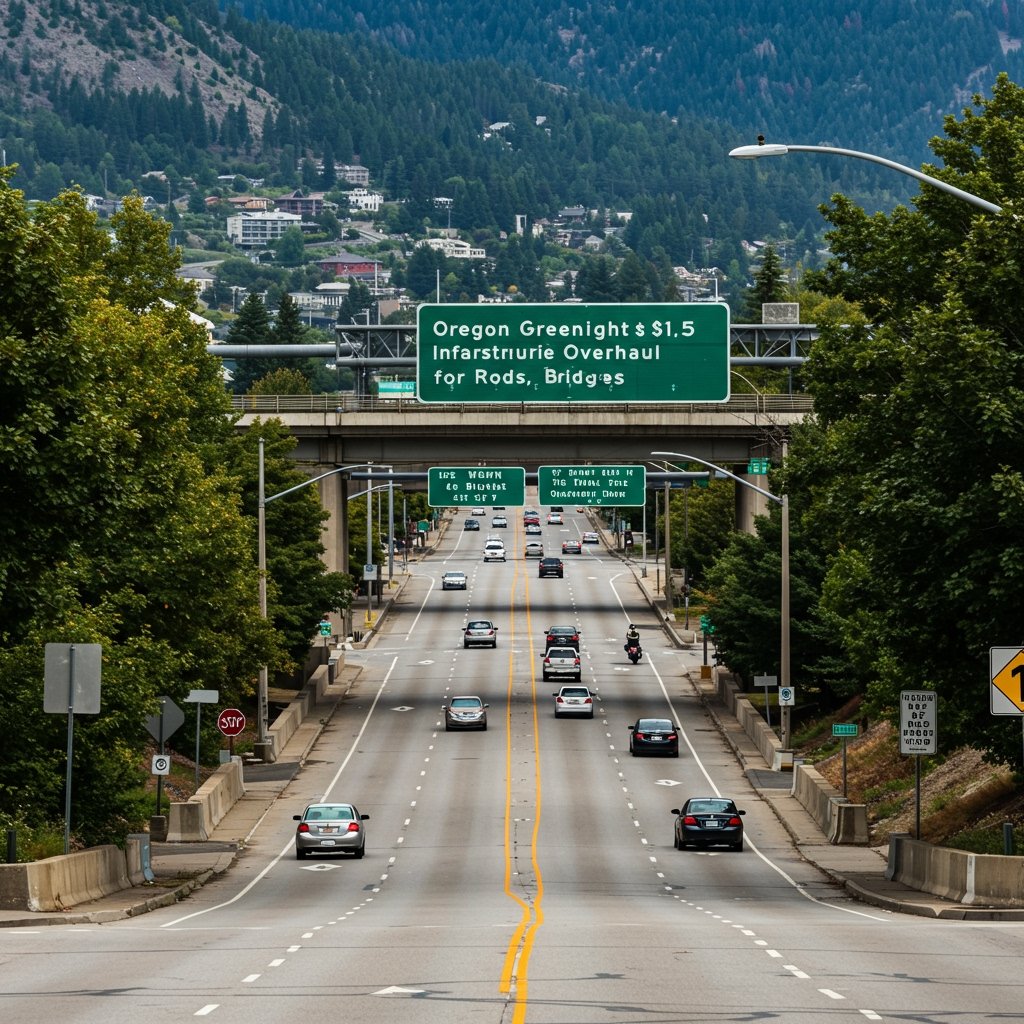Legislative Milestone
The Oregon Legislature has successfully navigated a complex legislative process to approve a landmark investment in the state’s transportation future. Late Friday morning, June 6th, lawmakers gave final passage to the Infrastructure Investment Act of 2025, known formally as HB 3001. This comprehensive legislative package earmarks a substantial $1.5 billion specifically for modernizing Oregon’s aging transportation network over the next five years. The bill’s passage came after considerable debate and negotiation, ultimately succeeding in a close vote that underscored the importance and complexity of statewide infrastructure funding.
The passage of HB 3001 represents a significant legislative achievement aimed at addressing critical needs that have accumulated over decades. Proponents argue that this investment is not just about concrete and asphalt, but about bolstering the state’s economy, improving safety for travelers, and ensuring reliable connectivity for communities and businesses across Oregon. The bill faced scrutiny and debate regarding funding sources, project priorities, and the overall scope, reflecting the diverse needs and perspectives present within the legislature and across the state.
Funding Breakdown and Priorities
The $1.5 billion allocated by the Infrastructure Investment Act of 2025 is designated for key areas of transportation infrastructure. A significant portion of the funds is targeted towards critical repairs and maintenance of existing infrastructure. This includes addressing the extensive network of highways and bridges throughout Oregon that are in need of repair or replacement. State transportation officials and advocacy groups have long highlighted the deferred maintenance backlog, emphasizing that failure to address these issues leads to higher long-term costs, increased safety risks, and negative impacts on freight movement and daily commutes.
Beyond essential repairs, HB 3001 also directs substantial investment towards expanding public transit options, particularly in Oregon’s most densely populated metropolitan areas. Cities like Portland and Salem are slated to receive funding to support projects aimed at improving and expanding their public transportation systems. This could include investments in new bus routes, increased service frequency, upgrades to light rail infrastructure, or the development of new transit corridors. The goal of these investments is to reduce traffic congestion, offer residents viable alternatives to driving, and improve accessibility for commuters and those reliant on public transit for essential travel.
The five-year timeline attached to the $1.5 billion funding package provides a framework for phased implementation of projects. This allows state and local transportation agencies to plan, design, and execute projects in a structured manner, prioritizing the most urgent repairs while simultaneously developing plans for transit expansions. The phased approach is intended to ensure efficient use of funds and minimal disruption, although large-scale infrastructure projects inherently involve planning and construction timelines that span multiple years.
Governor’s View and Economic Impact
Oregon Governor Tina Kotek lauded the passage of the Infrastructure Investment Act of 2025, characterizing it as a vital step forward for the state. Following the legislative vote, Governor Kotek released a statement praising the collaborative effort that led to the bill’s approval. She emphasized that the funding package directly addresses long-standing infrastructure needs that are absolutely crucial for maintaining Oregon’s economic vitality and ensuring public safety. The Governor has consistently advocated for increased investment in transportation as a key component of her agenda to improve the state’s livability and competitiveness.
The investment is expected to yield significant economic benefits for Oregon. Infrastructure spending is a well-known catalyst for job creation, supporting employment in construction, engineering, and related industries. Furthermore, improved transportation infrastructure can enhance economic productivity by reducing transportation costs for businesses, improving supply chain reliability, and making it easier for workers to commute. Addressing the state’s infrastructure deficit is seen by many as essential for attracting new businesses and supporting the growth of existing ones, ultimately contributing to a stronger, more resilient statewide economy.
Safety is another paramount concern addressed by HB 3001. Repairing deteriorating bridges and highways reduces the risk of accidents and ensures that transportation routes remain reliable and safe for all users. Investments in public transit also contribute to overall safety by potentially reducing the number of vehicles on the road and providing safer commuting options, especially in busy urban environments.
Funding Mechanisms and Future Outlook
The $1.5 billion funding for the Infrastructure Investment Act of 2025 is derived from a combination of financial mechanisms. A significant portion will come from state general obligation bonds. These bonds represent the state borrowing money for capital projects, with repayment typically coming from the state’s general fund over an extended period. General obligation bonds are a common method for financing large-scale public works projects and require careful management of the state’s debt obligations.
In addition to bonding, the bill also introduces increased transportation-related fees. While the specifics of these fees have been a point of discussion, they are designed to provide a dedicated, ongoing revenue stream for transportation funding. Crucially, these increased fees are not set to take effect immediately upon the bill’s signing; they are scheduled to be implemented starting in 2026. This phased implementation provides time for public awareness and administrative preparation before the new fees impact Oregonians.
The combination of one-time bonding and new fee revenues is intended to provide a stable and substantial funding source for the five-year investment period outlined in HB 3001. While the bill addresses critical needs, the long-term future of Oregon’s transportation funding remains an ongoing conversation, likely requiring continued legislative attention in future sessions to sustain infrastructure improvements beyond this initial five-year window. The successful passage of this bill, however, marks a significant commitment by the state legislature to prioritizing the vital infrastructure that underpins Oregon’s economy and quality of life.




